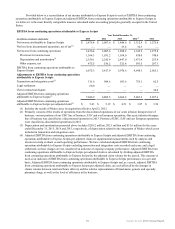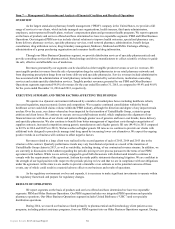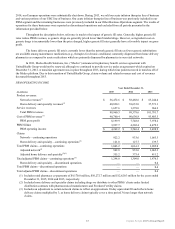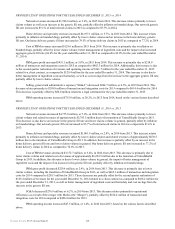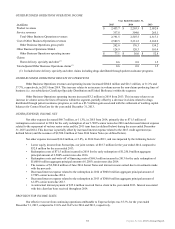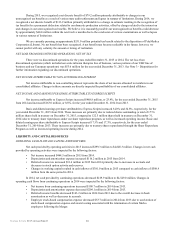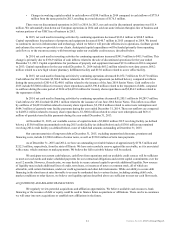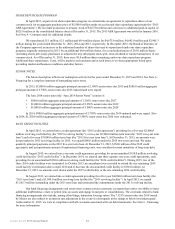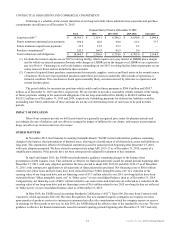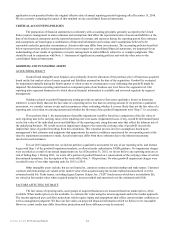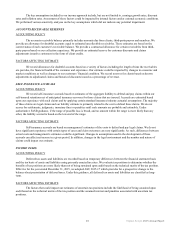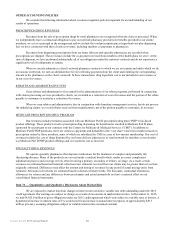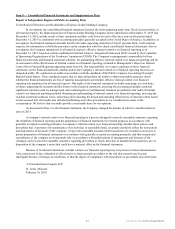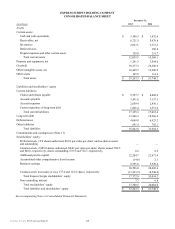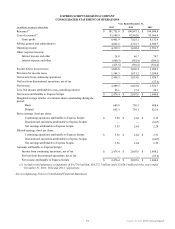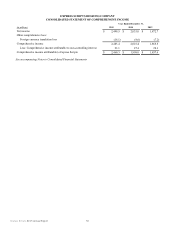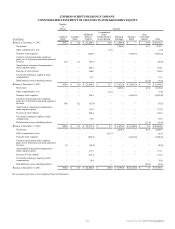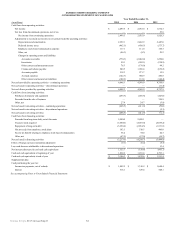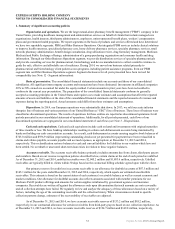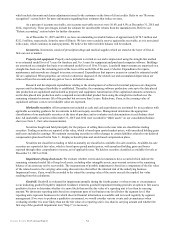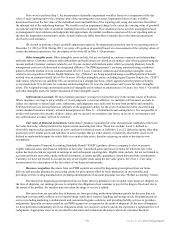Medco 2015 Annual Report Download - page 47
Download and view the complete annual report
Please find page 47 of the 2015 Medco annual report below. You can navigate through the pages in the report by either clicking on the pages listed below, or by using the keyword search tool below to find specific information within the annual report.
45 Express Scripts 2015 Annual Report
The key assumptions included in our income approach include, but are not limited to, earnings growth rates, discount
rates and inflation rates. Assessment of these factors could be impacted by internal factors and/or external economic conditions.
We performed various sensitivity analyses on the key assumptions which did not indicate any potential impairment.
ACCOUNTS RECEIVABLE RESERVES
ACCOUNTING POLICY
The accounts receivable balance primarily includes amounts due from clients, third-party payors and members. We
provide an allowance for doubtful accounts equal to estimated uncollectible receivables. These estimates are based on the
current status of each customer’s receivable balance. We provide a contractual allowance for certain receivables from third-
party payors based on our collection experience. We provide an estimated reserve for customer discounts and claims
adjustments issued to customers in the form of client credits.
FACTORS AFFECTING ESTIMATE
We record allowances for doubtful accounts based on a variety of factors including the length of time the receivables
are past due, the financial health of the customer and experience. Our estimate could be impacted by changes in economic and
market conditions as well as changes to our customers’ financial condition. We record reserves for clients based on known
adjustments to adjudicated claims and historical discounts issued as a percentage of revenue.
SELF-INSURANCE ACCRUALS
ACCOUNTING POLICY
We record self-insurance accruals based on estimates of the aggregate liability to defend and pay claims within our
self-insured retentions net of anticipated insurance recovery for those claims that are insured. Accruals are estimated based
upon our experience with such claims and by applying certain standard insurance industry actuarial assumptions. The majority
of these claims are legal claims and our liability estimate is primarily related to the cost to defend these claims. We do not
accrue for settlements, judgments, monetary fines or penalties until such amounts are probable and estimable. Under
authoritative FASB guidance, if the range of possible loss is broad, and no amount within the range is more likely than any
other, the liability accrual is based on the low end of the range.
FACTORS AFFECTING ESTIMATE
Self-insurance accruals are based on management’s estimates of the costs to defend and pay legal claims. We do not
have significant experience with certain types of cases and claim outcomes can vary significantly. As such, differences between
actual costs and management’s estimates could be significant. Changes to assumptions used in the development of these
accruals can affect net income in a given period. In addition, changes in the legal environment and the number and nature of
claims could impact our estimate.
INCOME TAXES
ACCOUNTING POLICY
Deferred tax assets and liabilities are recorded based on temporary differences between the financial statement basis
and the tax basis of assets and liabilities using presently enacted tax rates. We evaluate tax positions to determine whether the
benefits of tax positions are more likely than not of being sustained upon audit based on the technical merits of the tax position.
Effective for the year ended December 31, 2015, we adopted ASU 2015-17 which provides for a prospective change to the
balance sheet presentation of deferred taxes. Under this guidance, all deferred tax assets and liabilities are classified as long-
term.
FACTORS AFFECTING ESTIMATE
The factors that could impact our estimates of uncertain tax positions include the likelihood of being sustained upon
audit based on the technical merits of the tax position and the assumed interest and penalties associated with uncertain tax
positions.


